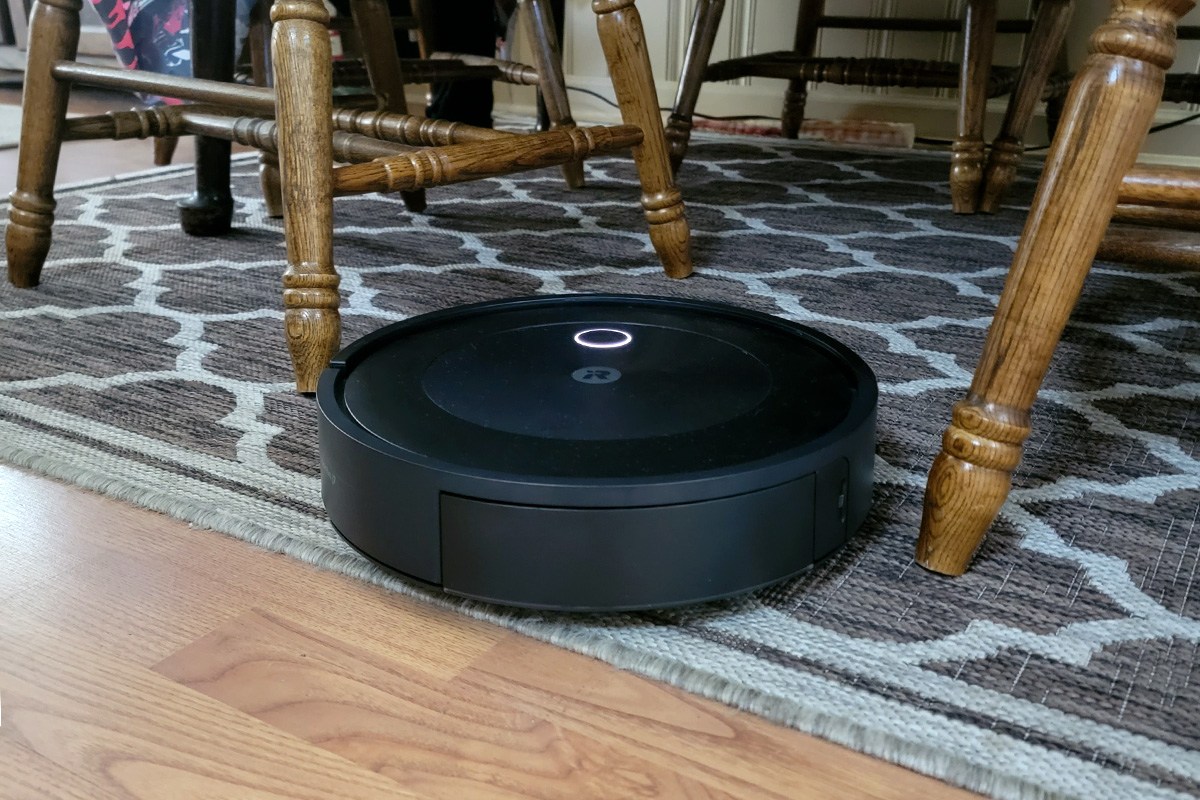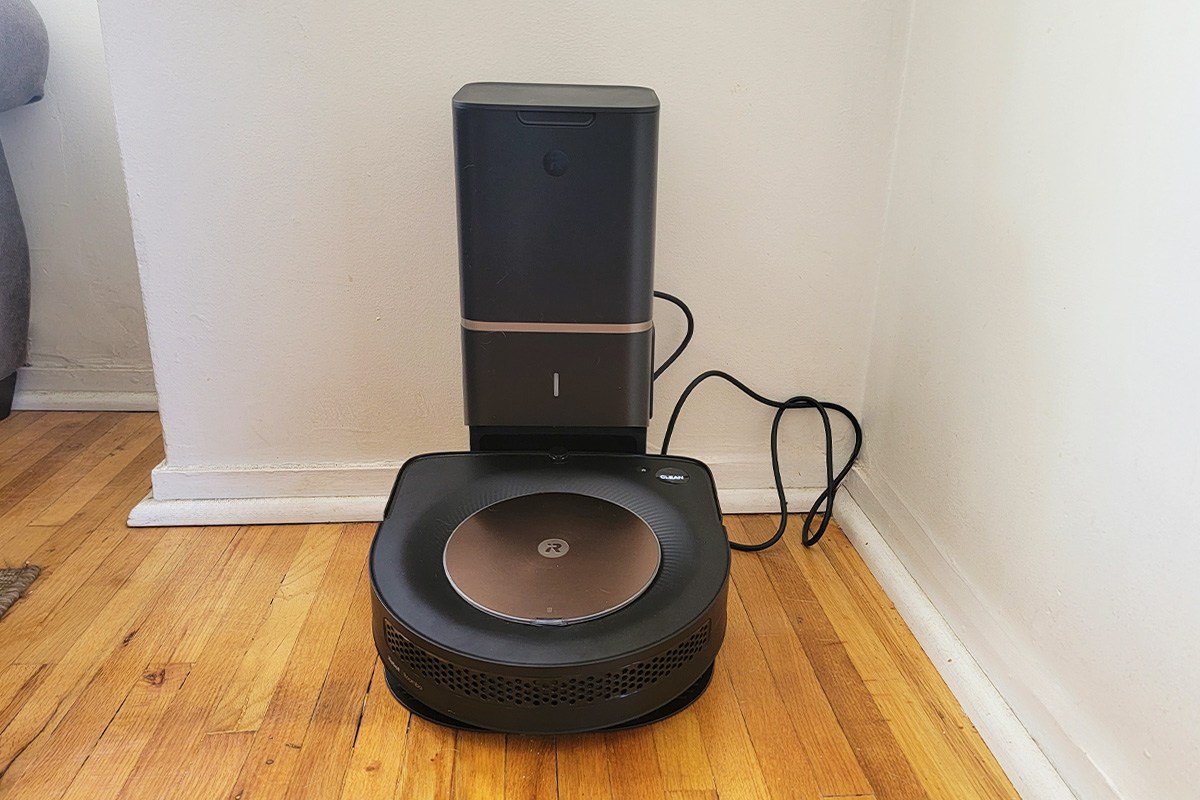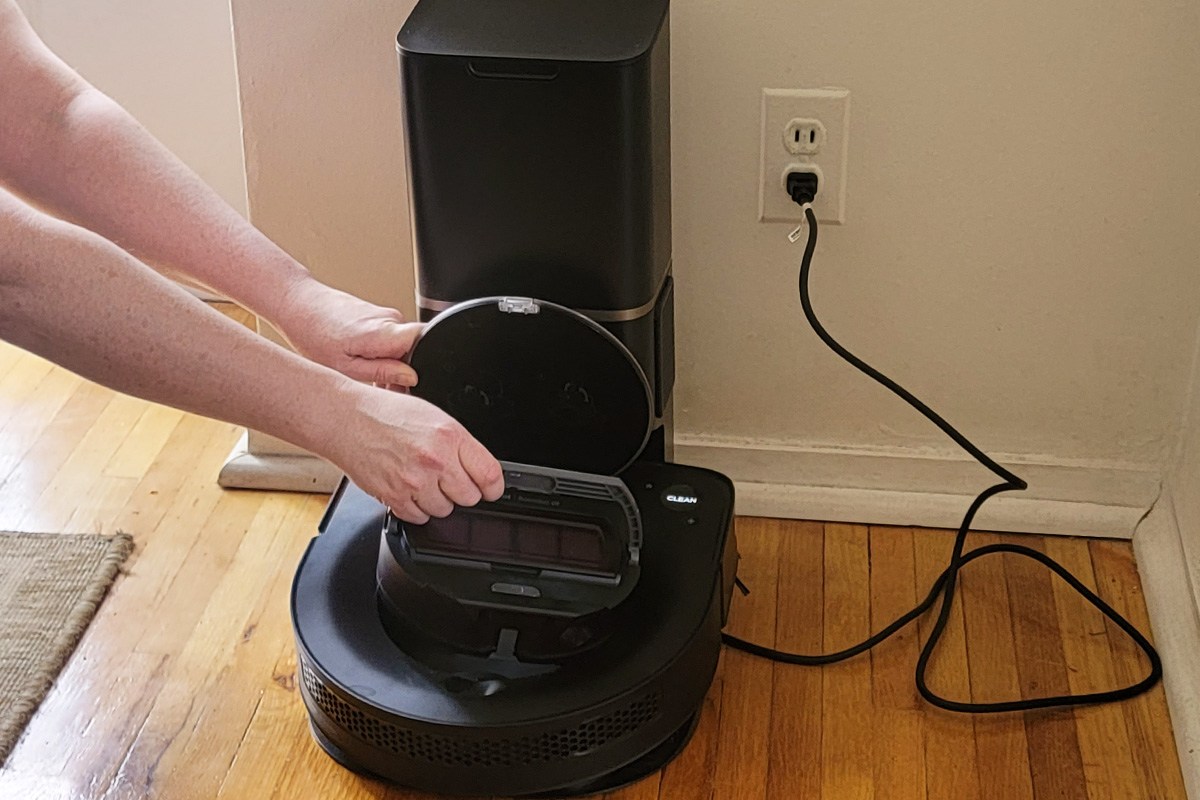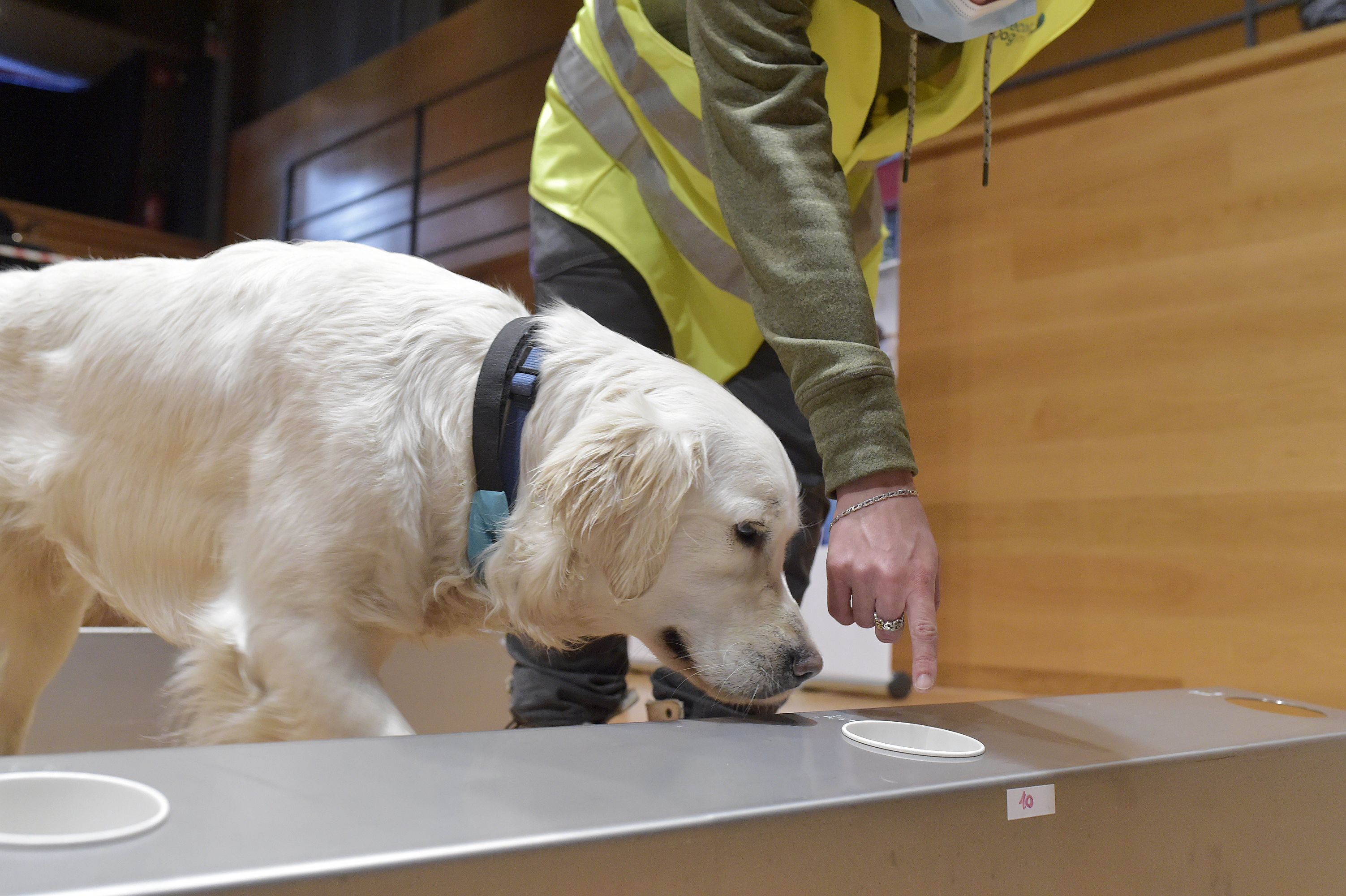Comparing the iRobot Roomba j7+ and s9+ models
Roomba is probably the first name that comes to mind when you think about robot vacuums — and for good reason. iRobot’s line of vacuums, around for more than 20 years, has certainly paved the way with innovative, intelligent designs. The Roomba j7+ and Roomba s9+ are the brand’s two most premium models, offering plenty of advanced features to make cleaning a snap, so choosing between the two robots isn’t easy.
In the BestReviews Testing Lab, we found that, while they are roughly the same size, have similar mapping abilities and both feature a convenient self-emptying base, the j7+ and s9+ differ in a few key areas. The j7+ offers superior obstacle avoidance, while the s9+ features significantly stronger suction power and more thorough corner and edge cleaning.
Ultimately, the j7+ is the best choice for pet owners who want a vacuum with above-average suction power that can avoid obstacles around the house, including pet waste. But if you want the most powerful robot vacuum to take care of nearly all the vacuuming in your home, look no further than the s9+.
Roomba j7+ vs. Roomba s9+ specs
The specs for the j7+ and s9+ are similar. However, some key difference between the two can affect their performance on hardwood and carpeting and in corners.
Roomba j7+ specs
 Testing team checks the effectiveness of the Roomba j7+ as it navigates around furniture.
Testing team checks the effectiveness of the Roomba j7+ as it navigates around furniture.
Product specifications
Battery life: 97 minutes | Dimensions: 13.3” L x 13.3” W x 3.4” H | Dustbin capacity: 0.4 L | Weight: 7.49 lb | Mapping: Yes | Self-emptying: Yes | Voice commands: Alexa, Google Assistant and Siri | Scheduling: Yes
The j7+ is a full inch wider than the s9+ and other Roomba models, but its profile is a tiny bit lower, which may allow it to fit beneath more furniture. With a battery that lasted nearly 100 minutes in our testing, it falls right in the middle of the pack with other robot vacuums. And while its dustbin is 100 milliliters smaller than the s9+’s, it is self-emptying, which means you don’t have to worry about it stopping in the middle of cleaning. If its bin is full, the j7+ automatically returns to its base to empty itself.
Like the s9+ and other advanced robot vacuums, the j7+ uses smart mapping and camera-based navigation to learn your home. It can identify specific rooms and zones, so you can send the robot to clean a certain area. It can even learn objects in your home and clean around furniture. It also supports Keep-Out Zones if there are areas in your home where you don’t want the robot to clean.
Released two years after the s9+, which came out in 2019, the j7+ is compatible with home assistants like Alexa and Siri, so you can use voice commands to control its cleaning. That makes it easy to clean messes as they happen because you can ask the j7+ to clean under your kitchen table when the kids get crumbs on the floor or vacuum the living room where your pets have been playing. Additionally, you can schedule regular vacuuming with the iRobot Home app. You can choose the day and time the j7+ vacuums and customize its cleaning preferences to ensure your floors are as pristine as possible.
Roomba s9+ specs
 The testing team determines the battery life of the Roomba s9+.
The testing team determines the battery life of the Roomba s9+.
Product specifications
Battery life: 107 minutes | Dimensions: 12.25” L x 12.25” W x 3.5” H | Dustbin capacity: 0.5 L | Weight: 8.15 lb | Mapping: Yes | Self-emptying: Yes | Voice commands: Alexa, Google Assistant and Siri | Scheduling: Yes
What stands out immediately about the s9+ is its unique D-shape design, which allows it to reach into corners far better than the average circular robot vacuum. Among the heavier options at 8.15 pounds, it has a medium-sized dustbin, but it’s self-emptying like the j7+, so it won’t stop in the middle of cleaning when it’s full. It also has a fairly long battery life, running for over 100 minutes on a single charge during our testing. If you want to empty the bin manually, it releases from the robot’s top and comes out easily. The bin itself opens from the bottom, too, so all of the debris inside falls out without any shaking.
Like the j7+, the s9+ creates smart maps of your home to learn rooms, zones and objects. That allows you to vacuum specific rooms or around certain furniture. For example, you can send the robot out to clean in front of the kitchen counter. It also allows you to create Keep-Out Zones to prevent the s9+ from cleaning in a certain area, such as where you keep your pet’s bowls.
You can use voice commands to control the s9+ via a home assistant, such as Alexa or Google Assistant. For more regular cleaning, you can use the iRobot Home app to create a cleaning schedule. Each scheduled cleaning session lets you select a day and time, as well as cleaning preferences, like the number of passes and suction power.
Suction comparison
The Roomba j7+ and s9+ are both advanced models, offering strong suction. However, the s9+ stands out for its superior power. While the j7+ has 10 times the suction power as the Roomba 600 series, the s9+ provides 40 times the suction for truly impressive performance on all types of flooring.
This top-notch suction power comes at a price, though — the s9+ is noticeably noisier than other robot vacuums, including the j7+. The j7+ tops out at about 64 decibels, while the s9+ can hit more than 74 decibels at maximum power.
Carpet comparison
Both the Roomba j7+ and s9+ performed well on carpeting. In fact, they were two of the top-performing models among those we tested. However, the s9+ did have the edge, offering suction power that came as close to a standard vacuum cleaner as any of the Roombas we tested.
On medium-pile carpet, the s9+ removed coarse kosher salt, cereal and kitty litter without leaving noticeable debris behind. When it missed a few particles of salt and kitty litter, it captured the remaining debris on its second pass. It pulled pet hair from the carpet without a single strand left behind, too. On low-pile area rugs and runners, we also found that it picked up all the debris in its path on these surfaces without any particles left behind.
During testing, the j7+ successfully handled most debris on medium-pile carpeting, but it wasn’t as impressive as the s9+. It missed several particles of kosher salt and crushed a piece of cereal into the carpet. However, it removed nearly all the remaining cereal crumbs when it did a second pass. It captured nearly all the kitty litter we placed in its path except a single piece and cleaned 100% of the pet hair in a single pass. Like the s9+, the j7+ handled debris on low-pile area rugs and runners with even greater success, so we didn’t observe any debris when it was done cleaning.
Hardwood comparison
The Roomba j7+ and s9+ offered even better suction on hardwood during testing. However, they both occasionally encountered the same problem that many robot vacuums do on hard flooring: Because the surface is usually smooth and slick, it’s easy for the robot to blow some particles of larger debris out of its path. Both the j7+ and s9+ did this in some cases, but the s9+ did it less frequently because of its superior suction power.
Both models cleaned pet hair from hardwood without any issues. The s9+ removed all the coarse kosher salt we placed in its path except for a granule or two, while the j7+ left behind just a few particles. Both successfully captured cereal on hardwood, though they did blow a couple of pieces out of their path. The s9+ picked up these pieces from the edge of the room, while the j7+ didn’t. We also found that both had success removing kitty litter from hardwood, but it took more than one pass to capture all of the particles.
Navigation comparison
The j7+ and s9+ both use a camera to aid their navigation. However, the j7+ has a front-facing camera, while the s9+ has a top-mounted camera. The j7+’s navigation sensor is also located at the front of the robot. Why does this matter? The placement of the cameras and sensors plays a significant role in how well they can navigate a space.
In particular, the front-facing camera and sensor mean the j7+ has obstacle avoidance, allowing it to move around objects without running over or bumping into them. In fact, iRobot is so confident in the j7’s ability to avoid obstacles that it’s backed by P.O.O.P., or the Pet Owner Official Promise, which affirms that you can count on the j7+ to avoid pet accidents and waste, or iRobot will replace your robot for free.
During our testing, the j7+ did an excellent job avoiding items in its path. We placed a handbag, a shoe and a stuffed pet toy in its way, and in all three cases, the robot seemed to sense the object and swerve around it.
On the other hand, the s9+ wasn’t as adept at avoiding items. It ran right over a book we placed in its path and bumped into a stuffed pet toy before moving around it. When we set a shoe in its path, it first tried to travel over it but then stopped and backed up to move around it.
When we stood in front of each robot, their reactions were also different. The j7+ pivoted away before touching us, while the s9+ lightly tapped our foot before moving away.
The advanced obstacle avoidance not only makes the j7+ an ideal model for a home with pets but also an excellent fit for a cluttered home. If you have children who leave toys scattered around, it can clean around the items without getting stuck. You might have less luck with the s9+.
Features comparison
Both the j7+ and s9+ have rubber brush rolls designed to loosen dirt and deal with hair more successfully than traditional bristle brushes. These rubber brushes are flexible, making them less likely to get tangled with hair. However, the s9+ features slightly wider brushes, which allow it to clean more efficiently than the j7+. During our testing, we were impressed by how quickly it worked — it cleaned 240 square feet in just 37 minutes. On the other hand, the j7+ needed 55 minutes to clean 260 square feet.
While the j7+ features the classic round shape that most robot vacuums have, the s9+ has a D-shaped frame — and this makes a big difference. Our testing found that the s9+’s flat edge allowed it to clean more thoroughly along walls. We placed kosher salt in corners with carpeting and hardwood, and it removed nearly all of the particles in a single pass on both surfaces. On the other hand, when we tested the j7+ in a carpeted corner, it only removed about three-quarters of the salt, leaving a noticeable line behind. It removed most of the salt on hardwood but blew several pieces away from the corner without picking them up.
Both the j7+ and s9+ come with a Clean Base that allows for self-emptying. However, the bases aren’t the same size. While they are roughly the same width, the s9+’s base is 19 inches tall, just over 3 inches taller than the j7+’s 15.8-inch tall base. We didn’t have trouble finding a spot for the s9+ in our testing area, but the j7+ can likely squeeze into more locations. Both bases can hold up to 60 days’ worth of dirt, and the j7+ even has a space in the top to hold an extra dirt-disposal bag.
 If you don’t necessarily need a self-emptying robot, you can opt for non-emptying models of j7+ and s9+ that cost considerably less. The j7 and s9 are the same vacuums as the Plus models but don’t come with a Clean Base.
If you don’t necessarily need a self-emptying robot, you can opt for non-emptying models of j7+ and s9+ that cost considerably less. The j7 and s9 are the same vacuums as the Plus models but don’t come with a Clean Base.
Cleaning and maintenance
The j7+ and s9+ require similar cleaning and maintenance to keep them running at peak performance. Even though the models are self-emptying, it’s a good idea to manually empty the dustbin once every week or so to remove any debris that the Clean Base didn’t remove. You can also rinse the bin with warm water, but let it dry thoroughly before returning it to the robot.
You also need to empty the Clean Base when you get a notification from the iRobot app that its bag is full. The bags are disposable, so you can toss a full one in the trash and replace it.
The area that requires the most care for these models is the brush roll since hair and other debris can accumulate around them. You can easily pop out the brushes by pressing the tab on the robot’s underside. When we cleaned these vacuums during testing, we found we could remove hair and other debris with just our fingers. You can also wipe the brush rollers down with a clean, dry cloth if you notice visible dirt.
The high-efficiency filter, edge-sweeping brush and brush rollers for the j7+ and s9+ also require periodic replacement. It’s simple to check their status in the iRobot app under the Product Health tab. There, you can see how many hours until the components require replacement.
Price
The Roomba j7+ regularly costs $799.99. It’s available on Amazon. The Roomba s9+ typically retails for $999.99. You can also find it on Amazon.
How we tested
To see just how well the Roomba j7+ and s9+ perform in real-world conditions, we not only sent them out to do regular cleaning but also put them through specific tests.
First, we measured stats like battery life, charging time, how long they could clean until their dustbins were full and how long they took to clean a given area. Next, we placed different types of debris, including kosher salt, kitty litter, cereal and pet hair, on both carpeting and hardwood and evaluated how well they handled the mess. We also tested how well each model cleaned in corners and around furniture.
Finally, we examined how well the iRobot app works with each model for scheduling, mapping and Keep-Out Zones and used voice commands to see how responsive both were.
Bottom line
It’s hard to go wrong with either the Roomba j7+ or the s9+ because they’re both advanced models that work well on carpeting and hard floors and offer many convenient features. But if you want the most powerful model that can eliminate the need for a standard vacuum, the s9+ gets the edge. It can handle all types of debris, including pet hair, on both carpeting and hard flooring, and its unique D-shape allows it to get into corners without leaving a mess behind.
However, if you have pets, you’ll prefer the j7+. It handles pet hair well, even on carpeting, and also avoids obstacles, so it won’t run into your pet’s waste and track it all over the house. The obstacle avoidance feature also makes it a good fit for cluttered homes.
Want to shop the best products at the best prices? Check out Daily Deals from BestReviews.
Sign up here to receive the BestReviews weekly newsletter for useful advice on new products and noteworthy deals.
Jennifer Blair writes for BestReviews. BestReviews has helped millions of consumers simplify their purchasing decisions, saving them time and money.
Copyright 2023 BestReviews, a Nexstar company. All rights reserved.


























